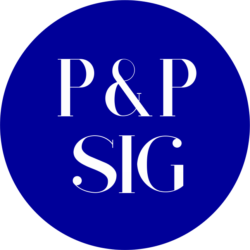Intercom-Febr /uary 2002; By Kelly A. Parr; Summary by Maria Christophel (2006)
This article provides background information on ISO 9000 and the reasons for complying with ISO 9001 requirements. It lists the five sections of the 9001 requirements and points these requirements as the basis for the audit of the documentation. It advises to purchase a copy of the ISO requirements, before preparing a documentation plan, for becoming familiar with the pyramid structure of the documentation process. It defines the need to establish an empowered employee task force including internal and external auditors. The author stresses the importance of performing detailed gap analysis, organizing the content according to schedules and milestones, writing the content according to the ISO pyramid levels, performing peer reviews, coordinating training prior to the implementation of procedures, and performing the audits for ensuring the quality of the documentation.
Technical Writing in the Financial Industry
Intercom-April 2005; By Sandy J. Larsen; Summary by Maria Christophel (2006)
This article establishes the job requirements placed by the financial industry when hiring technical writers making them practically unable to qualify for the job. The author proofs through research that several writers have entered the financial field as writers with no knowledge of banking, finance, or mergers and have become successful. The author states that it is possible for qualified technical writers to transition into another field of expertise by volunteering services and becoming formally or informally educated in the field the writers want to work.
Standards – New Opportunities for P&P Writers
Intercom-November 2005; By Ralph E. Robinson; Summary by Maria Christophel (2006)
This article discusses in detail the reasons why international standards are opening new opportunities for P&P writers, and how writers should take advantage of such opportunities. The author explains how the International Standards Organization (ISO) creates standards for global industries and why is good for business to comply with ISO requirements. Why are they important; he also provides a great deal of information about how international standards impact on P&P professionals.
Sarbanes-Oxley and New Opportunities
Intercom-January 2004; By Holly E. Harkness; Summary by Maria Christophel (2006)
This article presents the reasons why the Sarbanes and Oxley Act offers technical writers career opportunities similar to those offered by Y2K. It defines the Sarbanes Oxley Act (SOX) and notes that public owned companies are required to comply with the regulation and therefore, some companies are spending millions in their projects. The articles provides a br /ief background of how the author’s team became involved with the project and it notes that the team wrote polices, procedures, processes, etc. The role of the technical communicator offers opportunities for demonstrating skills such as creating processes, identifying gaps, documenting controls, updating documents, etc. The article advises that to get started a technical writer should emphasize experience writing policies and procedures, and the knowledge of SOX and its interpretation.
Policies and Procedures – An STC Niche
Intercom-November 2005; By Raymond E. Urgo; Summary by Maria Christophel (2006)
This article explains the creation of the P&P Special Interest Group (SIG) as the first body in the world for offering assistance to policies and procedures technical writers.
A Career on Campus- Writing Administrative Policies for the Public University
Intercom-November 2005; By Catherine Reynolds; Summary by Maria Christophel (2006)
This article explains how the skills acquired in the corporate environment can be of benefit to a writer employed in a higher education institution. It describes the opportunities offered to the writer for making a contribution to the elaboration of policies that impact the educating community. It also explains how different strategies such us learning the environment can be used to promote relevant and clear communication to the different groups of a campus community.
